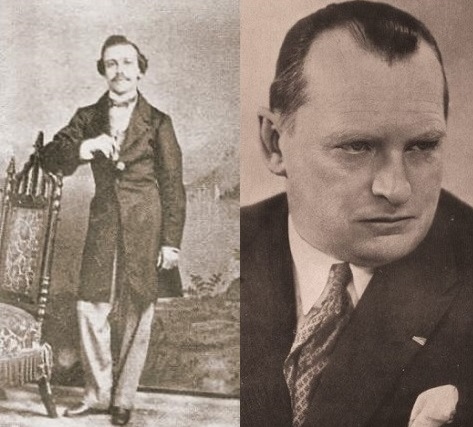
Edward Winter

Paul Morphy and Alexander Alekhine
Did Paul Morphy take more than an hour to solve this problem, to the incredulity of Alekhine, who solved it almost instantly?

Mate in three
On the merits of the composition, there is no agreement; it has been labelled ‘excellent’ and ‘masterly’ yet prompted one critic to call the composer ‘a washout’. The latter epithet is, at least, applicable to many writers’ handling of the problem, which abounds in error and confusion.
From Agonía de un Genio by Pablo Morán (Madrid, 1972):
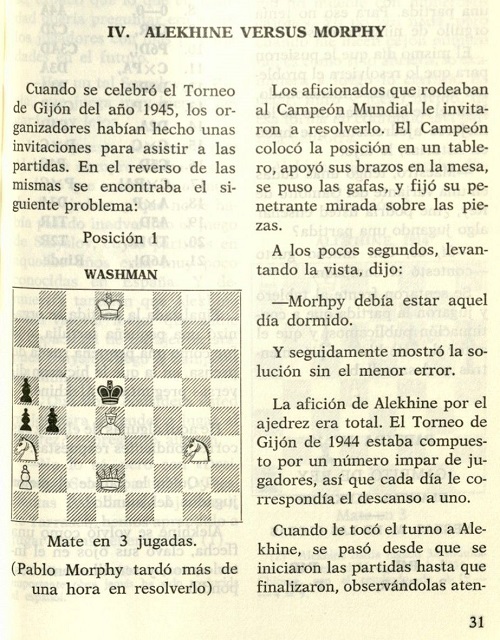

As regards the source of the Alekhine story, the ‘Alekhine versus Morphy’ chapter specified that Morán was in Gijón on the day in question. As regards the source of the Morphy story, see below.
After we drew the Morán account to the attention of D.J. Morgan, he wrote an item in his Quotes and Queries column (Q&Q 3499) on page 321 of the September 1974 BCM, although without mentioning Morán’s book:
‘... During the Gijón Tourney of 1945, the invitations sent out had on the back the problem shown, adding that Morphy had taken an hour to solve it. We know nothing of the source, nor even the composer (nor does Jeremy Gaige even!!). The problem, we are told, was shown to Alekhine. He leaned on the board, put on his glasses, and in a few seconds demonstrated the complete solution (1 Q-Q1).
The laugh of the month! What a problem! Even we ... but no! We would be boasting! We can only say that as a composer Washman is a washout and poor Morphy must have been under morphia.’
No BCM readers having taken up the matter, six years later we reverted to it in Q&Q 4064. The Quotes and Queries column was then conducted by K. Whyld, who wrote on pages 373-374 of the July 1980 BCM:

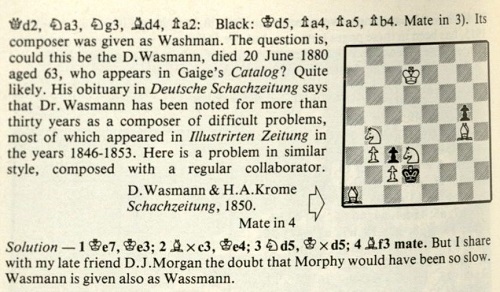
A tangential item (Q&Q 4092), concerning William Robert Inge Dalton (see C.N. 8227), was on page 55 of the February 1981 issue:

In 1989 we asked Pablo Morán (Gijón, Spain) what his source had been for the story about Morphy requiring over an hour, and on 3 April 1989 he referred us to pages 463 and 479 of the Traité élémentaire du jeu des échecs by Count de Basterot (Paris, 1863):
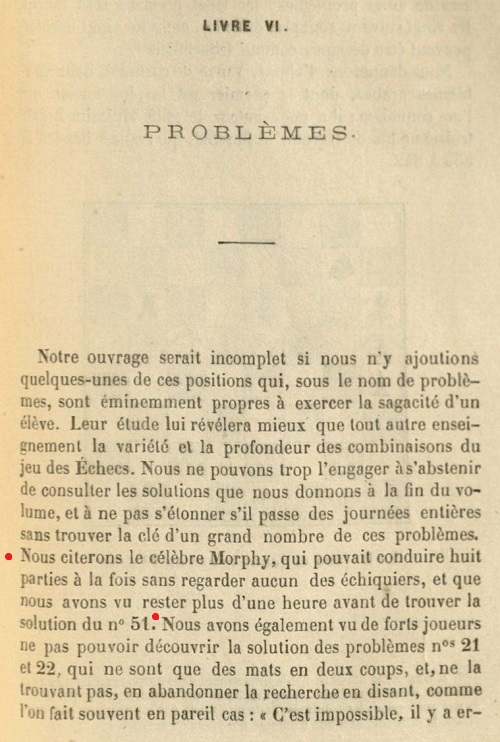

We forwarded that information to K. Whyld, who gave the following as Q&Q 4806 on pages 314-315 of the July 1989 BCM:

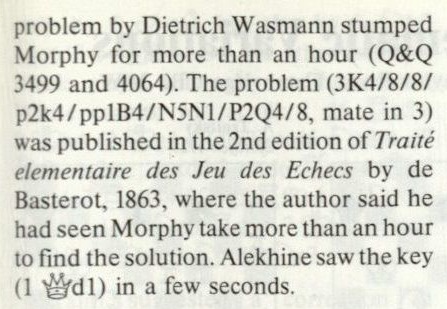
It will be seen that whereas we had informed Whyld of Morán’s source for the information in Agonía de un Genio, the Quotes and Queries item suggested that Morán had communicated – direct to Whyld – a source which he had found only recently. (In 1989 Whyld sent us a large number of letters which muddled this topic, and many others. For example, on 21 September 1989 he wrote to us unfathomably: ‘How could I know that the Moran item was sent as a claim to be his source for his Alekhine book when we can be pretty certain that he saw the Gijon reprint?’)
See also our feature article about K. Whyld, Reliability Eroded.
In 1989 Frank X. Mur’s English translation/adaptation of the Morán book was published by McFarland, under the title A. Alekhine Agony of a Chess Genius. Below is the section on the three-mover:
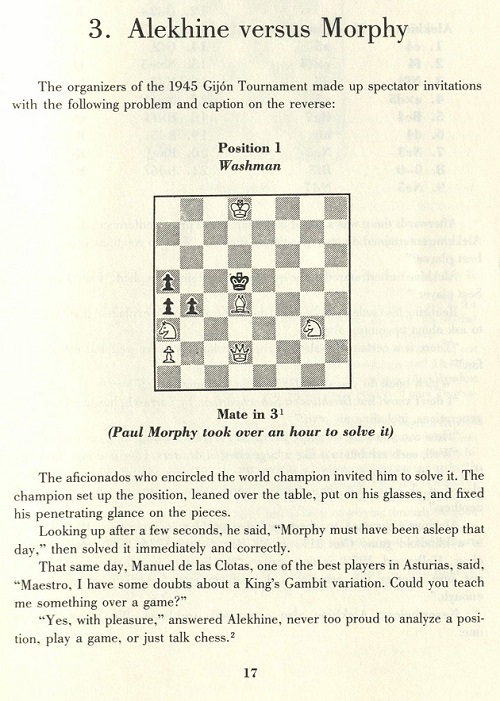
The solution was on page 19, and the index on page 313 identified the composer as ‘Washman [Wasmann, D.]’.
Have any printed invitations to Gijón, 1945 survived?
We have recently been hunting for nineteenth-century references to the three-mover and to the Morphy story, and immense help has been provided by the listings in the French WinChloe database, as brought to our attention by Michael McDowell (Westcliff-on-sea, England). The earliest citation in WinChloe is the June 1856 issue of La Régence, where the following appeared on page 192 (a composition by ‘M. Wassmann’):
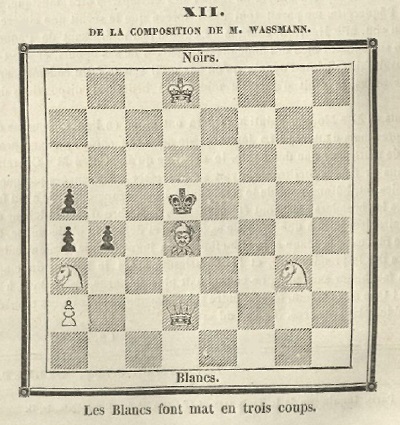
The single-variation solution was on page 319 of the 15 October 1856 edition of La Régence.
WinChloe also has three references to ‘reproductions’ of the composition:
Below we can show those three publications:
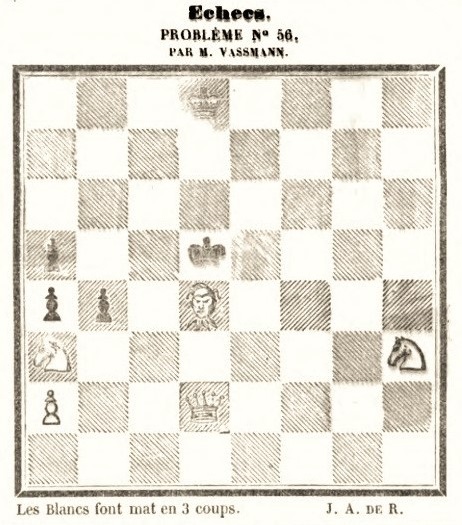
The following correction, itself inaccurate as regards the misplaced knight, was published on page 403 of the 14 June 1856 edition:

‘J.A. de R.’ was Jules Arnous de Rivière.

From the 3 January 1857 edition:
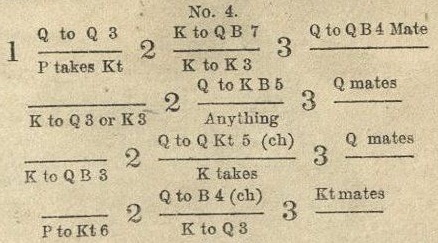
This solution is obviously wrong, given that 1 Qd3 bxa3 2 Kc7 fails because there is no guard on e7.
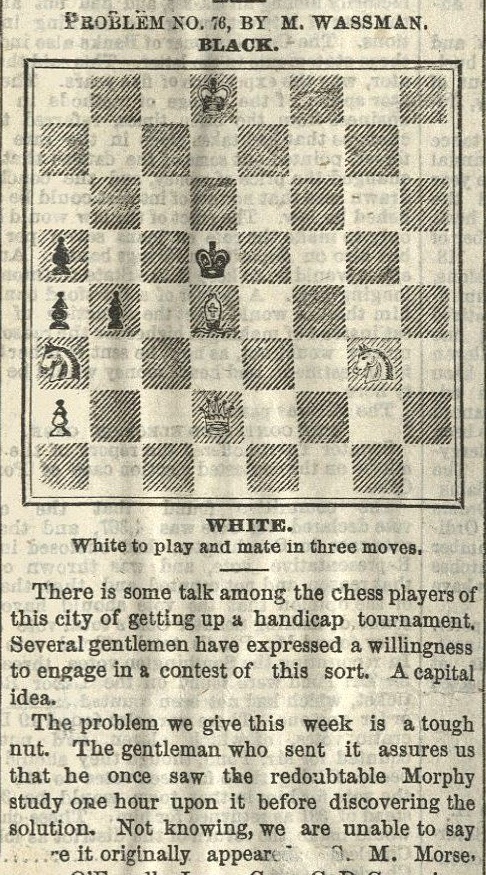
The reference to Morphy will be noted. A single-line solution appeared in the 29 June 1872 column.
A fourth nineteenth-century publication of the three-mover is mentioned in the Meson database, as pointed out to us by Michael McDowell, and as was shown in C.N. 10398 (from the chess column on page 14 of The Era, 20 July 1856, which called the composition ‘masterly’):
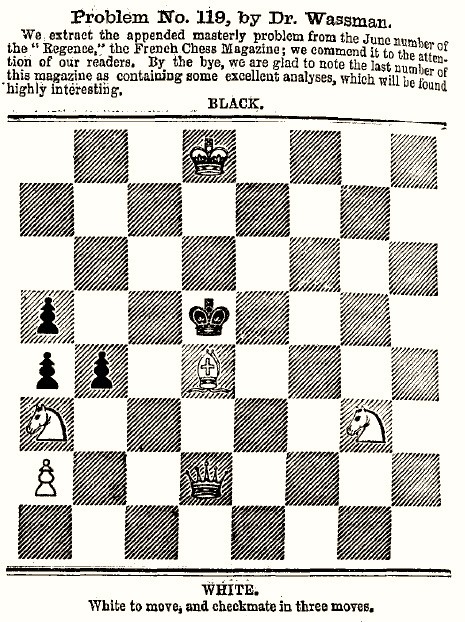
The next column (27 July 1856, page 14) reported that only three readers had submitted correct solutions:

It will be noted that The Era named the composer as Dr Wassman, even though its source, La Régence, had referred to him as M. Wassmann (M. being the abbreviation of Monsieur).
The WinChloe database also referred to an earlier (1850) version of the composition, published in two newspapers:
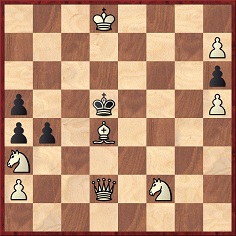
Mate in three, without queening
WinChloe noted that the composition, by ‘D. Wasmann’, was faulty, in view of 1 Be3+. The source mentioned was the Illustrirte Zeitung, 11 May 1850, page 304:
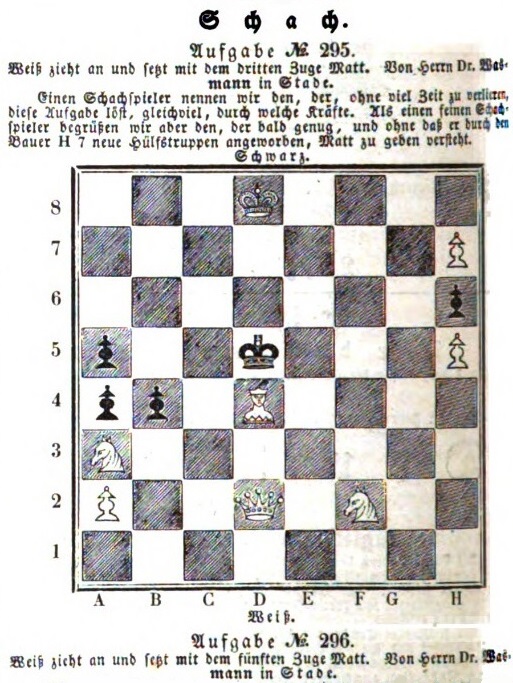
The introductory German text reads:
‘Weiß zieht an und setzt mit dem dritten Zuge Matt. Von Herrn Dr. Wasmann in Stade.
Einen Schachspieler nennen wir den, der, ohne viel Zeit zu verlieren, diese Aufgabe löst, gleichviel, durch welche Kräfte. Als einen feinen Schachspieler begrüßen wir aber den, der bald genug, und ohne daß er durch den Bauer H 7 neue Hülfstruppen angeworben, Matt zu geben versteht.’
The problem’s subsequent appearance in the Algemeen Handelsblad, 11 November 1850:
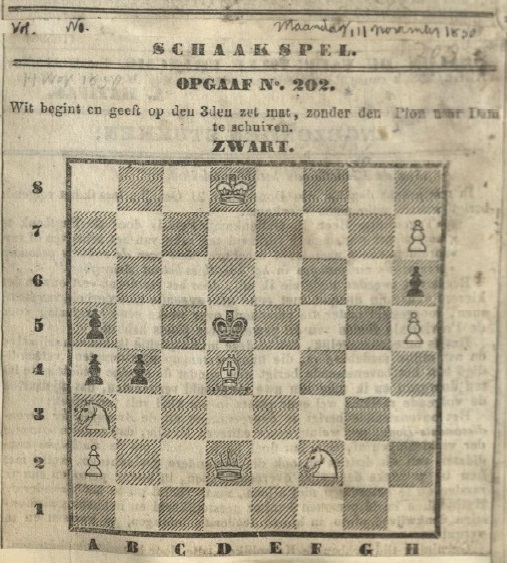
Although we have seen above the spellings ‘Washman’, ‘Wassman’, ‘Wassmann’ and ‘Vassmann’, the problemist was D. Wasmann, of whom an obituary was published on page 297 of the October 1880 Deutsche Schachzeitung:
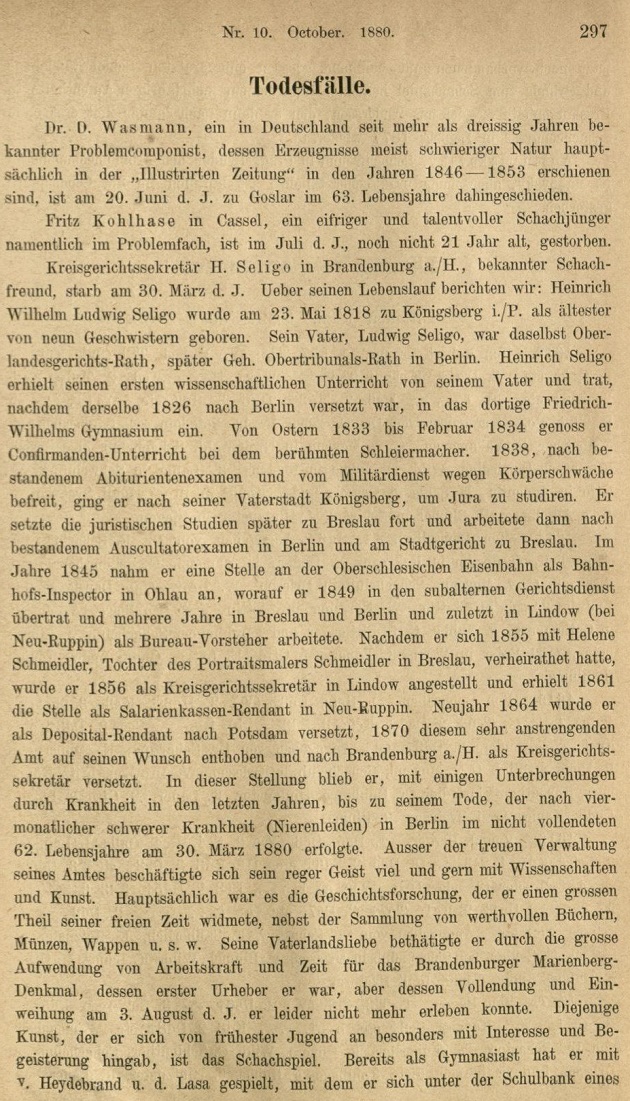

Page 185 of Schach Jahrbuch 1892/93 by Johann Berger (Leipzig, 1893):

To date, only two eye-witness statements that Morphy had difficulty in solving the problem can be cited: the Basterot book (1863) and the Hartford Weekly Times (1872). Can further instances be found?
Acknowledgement for scans in the present article: exceptional assistance has kindly been provided by William Chase and Raymond W. Rozman of the Cleveland Public Library.
***
See too Steinitz Stuck and Capa Caught.
To the Chess Notes main page.
To the Archives for other feature articles.
Copyright: Edward Winter. All rights reserved.